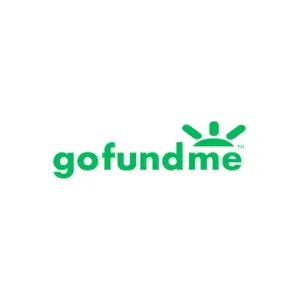The first noteworthy instance of crowdfunding on the internet occurred in 1997 when fans of the British rock band Marillion raised US$60,000 to fund an entire U.S. tour. Crowdfunding, as a concept, had existed before, but the advent and the subsequent popularization of the internet helped it reach an unprecedented number of people.
It would still take more than a decade since 1997’s Marillion crowdfunding campaign for the birth of crowdfunding companies like GoFundMe & Kickstarter, both of which are now giants in the crowdfunding space. With time, the causes for which people raised money using the internet also diversified. Today, we see crowdfunding initiatives for medical emergencies, educational requirements, animal shelters, technological innovation, and several other reasons. With time, the concept of online crowdfunding has also crossed borders, from sprouting in the west to even leaving its mark in eastern markets like India & Indonesia.
GoFundMe, the crowdfunding company, which is our topic of discussion for today, holds the spot for being the world’s largest fundraising platform, with most funds raised serving social causes. As a company, GoFundMe is worth studying because the company’s business model has evolved nobly over the years & the evolution might also act as an inspiration for crowdfunding platforms focussed on a particular niche or ones which focused on, say, one specific country.
In this blog, I will walk you through the founding and growth story of GoFundme, then see how its Business Model has evolved over the years and how GoFundme makes money at present moment. In the end, we will also see how GoFundme has given much-needed support to the United States healthcare system.
GoFundMe’s Founding & Growth Story
GoFundme was initially started under the name CreateAFund, in 2008, by co-founders Brad Damphousse and Andrew Ballester. When it launched, GoFundme allowed social media users to raise money for specific causes or celebrations. But CreateAFund’s did not have a smooth takeoff, so the founders redesigned the website, relaunching under the name GoFundme in 2010.
As a matter of principle, the founders bootstrapped the company, refusing to take outside funding in the early days. By February 2012, GoFundMe was processing donations worth $1 Million, with donation volumes growing 500% in the same year.
In 2015, however, the two co-founders sold their controlling stake to the investor group, including Accel Partners and Technology Crossover Ventures (TCV). At the time of the deal, GoFundMe was valued at $600 million.
After the deal went through, Brad Damphousse and Andrew Ballester, the two co-founders, relinquished control of the company. Rob Solomon, previously Groupon CEO, then joined GoFundMe as its chief operating officer.
With the help of industry veterans and investors skilled in implementing the growth playbook, GoFundMe hired employees and expanded to newer markets. At the time of writing, GoFundMe operates in several countries like Canada, the United Kingdom, Australia, France, Germany, Ireland, Italy, the Netherlands, Spain, and more, apart from its birthplace US.
In total, GoFundMe has helped fund organizers raise over $5 billion from a community of 50 million donors.
GoFundMe Business Model
GoFundMe, like any other crowdfunding website, used to make money through two different sources: platform fees and transaction fees. One can think of platform fees as mediation charges used to sustain the operations of GoFundMe. On the other hand, transaction fees help cover the third-party costs associated with using a payment provider to process the donation payments securely.
Until November 2017, GoFundMe used to charge a 5% platform fee, 2.9% transaction fee & $0.30 per donation in the US market. If a user were to donate $100 to a cause in this model, then the person who started the crowdfunding campaign would receive somewhere between $90 to $95 after GoFundMe’s platform and transaction fee deduction.
But GoFundMe donors were of the view that even though GoFundMe’s 5% platform fee was fair since it helped it sustain operations, they wanted all of the money to go to the cause. Encouraged by the suggestion of the donors and good sentiment around GoFundMe, the company decided to drop platform fees in the US market and instead ask donors to give a voluntary extra tip to the platform in good faith.
Even though GoFundMe’s board of directors was initially apprehensive of switching to a voluntary virtual tip model, the “effective rate” of user donations turned out to be enough to keep the business profitable. After the user tip model proved successful in the US, GoFundMe later rolled it out in other markets. At the time of writing, GoFundMe does not charge platform free in the following countries: US, Canada, Australia, UK, and most major European countries. . It is important to note that GoFundMe still charges transaction fees and a nominal per donation amount in these countries.
In the remaining countries, GoFundme still charges platform fees; but one can expect the company to let go of it in the future gradually.
To reiterate, GoFundMe now makes only money from transition fees because it has dropped platform fees. However, donors often tip the platform out of generosity to support the company’s mission. The money made from user tips is effectively used to pay employees and sustain company operations.
How GoFundMe Supports US Medical Fundraising
The fact that the US healthcare system is a mess is no secret. One indicator that the system needs rethinking is that 1/3rd of all GoFundMe donations go towards health care costs. According to GoFundMe’s website, nearly 250,000 crowdfunding campaigns have been set up through the platform, resulting in donations worth $650 million+ per year.
In an October 2020 interview, Rob Solomon, then GoFundMe CEO, criticized the US healthcare system without mincing words,
“The system is terrible. It needs to be rethought and retooled. Politicians are failing us. Health care companies are failing us. Those are realities. I don’t want to mince words here. We are facing a huge potential tragedy. We provide relief for a lot of people. But there are people who are not getting relief from us or from the institutions that are supposed to be there.
We shouldn’t be the solution to a complex set of systemic problems. They should be solved by the government working properly, and by health care companies working with their constituents. We firmly believe that access to comprehensive health care is a right and things have to be fixed at the local, state and federal levels of government to make this a reality.”
In an older interview, Solomon had even gone as further as to say,
“When we started in 2010, it wasn’t purposefully set up and built to be a substitute for medical insurance. We weren’t ever set up to be a health care company and we still are not. But over time, people have used GoFundMe for the most important issues they are faced with.”
Thank you for taking the time to read this piece. If you liked reading it, you might also like our article covering Snapchat’s Business Model.

